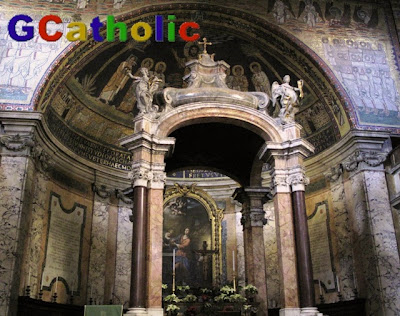During the same liturgy of the consistory for the creation of cardinals on February 18, Pope Benedict XVI also held a consistory for the canonization of saints in which he announced the date of her canonization as October 21, the Twenty-Ninth Sunday of Ordinary time, 2012. She will be raised to the altar together with six other saints, including Marianne Cope (who cared for the lepers in Moloka'i, Hawaii), Jacques Berthieu (the protomartyr of Madagascar), Pedro Calungsod (the
 Kateri Tekakwitha was born in 1656 in Auriesville, New York, to a Mohawk father and Algonquin mother. When she was four, a smallpox epidemic killed her whole family and left her visually impaired and disfigured. She met a Jesuit at the age of 18 who baptized her two years later on Easter day, and named herself after St. Catherine of Siena. Since then, she offered her sufferings and mortification of the flesh to pray for conversion of her kinsmen and for her own sanctity.
Kateri Tekakwitha was born in 1656 in Auriesville, New York, to a Mohawk father and Algonquin mother. When she was four, a smallpox epidemic killed her whole family and left her visually impaired and disfigured. She met a Jesuit at the age of 18 who baptized her two years later on Easter day, and named herself after St. Catherine of Siena. Since then, she offered her sufferings and mortification of the flesh to pray for conversion of her kinsmen and for her own sanctity.French troops attacked the Mohawk tribe, and in 1677, her mission relocated to Côte Sainte-Catherine, Quebec. There she lived a life of purity, poverty and holiness. When she died in 1680, her childhood facial scars disappeared and witnesses saw how her face transformed to great beauty. Many miracles were attributed to her, including the healing of a non-Catholic smallpox-infected young boy. The miracle for her canonization dates from 2006 to another young boy who suffered from a flesh-eating bacterium.
 Today her tomb lies in a shrine dedicated to her in the parish of St. Francis Xavier, Kahnawake, a reserve of the Mohawk nation on the south shore of St. Lawrence River, 10 km south west of Montreal. The church was built in 1720 when the mission finally settled down in Kahnawake and Kateri's relics were brought here too. Pilgrims can touch her marble tomb on the right side in the church. A gift shop and a museum can also be found next to the church.
Today her tomb lies in a shrine dedicated to her in the parish of St. Francis Xavier, Kahnawake, a reserve of the Mohawk nation on the south shore of St. Lawrence River, 10 km south west of Montreal. The church was built in 1720 when the mission finally settled down in Kahnawake and Kateri's relics were brought here too. Pilgrims can touch her marble tomb on the right side in the church. A gift shop and a museum can also be found next to the church.There is also a small national shrine dedicated to the saint in Fonda, New York, where she once lived. Do not miss the impressive National Shrine of Our Lady of Martyrs in Auriesville, which is only 8 km away.
Kateri is not only revered by native people but also by traditional aboriginal people. She will be first native American woman to become a saint. Canada and USA proudly consider her as their saint. Next year on April 17, we will be celebrating the 333rd anniversary of St. Kateri Tekakwitha's entry into heaven in even greater fervour.
















